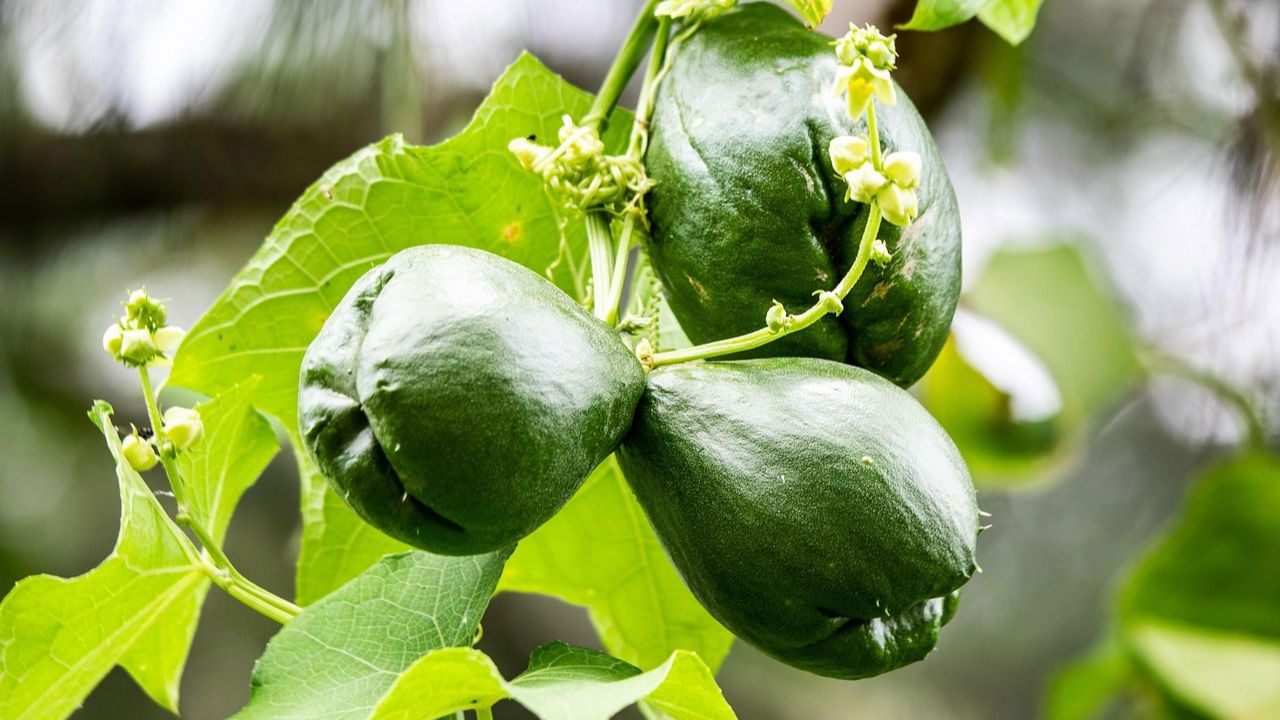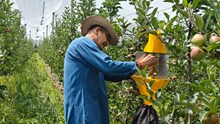
Chayote, scientifically known as ‘Sechium edule,’ belongs to the Cucurbitaceae family and is widely cultivated in the hill regions of India, including Sikkim, Mizoram, Meghalaya, Himachal Pradesh, and Tamil Nadu. This versatile and nutritious crop is an essential part of the local diet, with nearly every part of the plant, from the fruit and flowers to the seeds, tendrils, young leaves, shoots, and even the roots, being edible. Often referred to as the "poor man's vegetable," chayote is highly valued for its adaptability and high yield, making it a staple in many households. Additionally, it serves as an important fodder source for livestock.
The Indian Council of Agricultural Research (ICAR) Sikkim Centre has established a 'Field Gene Bank' that houses 86 accessions of chayote. This collection represents a remarkable diversity in fruit forms, including variations in shape such as round, oblong, spiny, and non-spiny types, along with a broad spectrum of colors ranging from creamy white to dark green.
Health Benefits of Chayote
Chayote is full of nutrients and is a very useful dietary component. This crop is full of fiber, vitamin C, potassium, calcium, iron, and amino acids. Daily intake of chayote improves digestion, promotes cardiovascular health, maintains blood pressure, and enhances immunity. The abundance of antioxidants protects against inflammation and oxidative stress. Chayote is also low in calories and carbohydrates and can be used for weight control and diabetes.
Climate Requirements
Chayote grows well optimally at altitudes of 300-2000 meters above sea level. It required high relative humidity of 80-85% and well-distributed rainfall of 1500-2000 mm per annum. The ideal temperature for cultivation is 15-25°C. Temperatures below 15°C impair young fruits. Temperatures greater than 28°C could lead to excessive vegetative growth, shedding of flowers, and eventually lower yield. The optimum fruit production happens when the night temperature is between 15-20°C.
Soil Requirements
Chayote is very tolerant of various types of soils, from sandy loam to heavy clay. It grows best in well-drained sandy loam soil with moderate water-holding capacity for the production of good-quality fruits. The pH of the soil should be 5.5-6.5. Waterlogging may inhibit root respiration and growth, which will eventually decrease yield. Under high-rainfall conditions, chayote must be planted on raised beds or mounds to avoid excessive water retention.
Field Preparation, Layout, and Planting
Chayote is traditionally cultivated in home gardens and kitchen gardens. but for field cultivation on a commercial scale, the field has to be well prepared. The field should be plowed several times to achieve a friable soil structure. Weeds and trash must be cleared, and deep tillage must be carried out to facilitate water intake.
Pits of size 45 cm x 45 cm x 45 cm need to be excavated at 3.0 m x 2.0 m spacing in January-February. 10 kg of well-decomposed farmyard manure (FYM) needs to be filled in each pit to improve soil fertility. In heavy rainfall areas, drainage systems should be properly set up to avoid soil erosion.
Propagation and Planting
Chayote is primarily propagated by planting whole fruits. The fruit should be placed at a 45-degree angle with the stem-end projecting a little above the ground level to avoid rotting. It can also be propagated through cuttings. The plants developed from cuttings produce less during the first year. March-April is the best time to plant, ideally on raised beds or ridges.
Training and Pruning
Chayote vines must be well-trained on trellises or support systems for best growth and fruiting. Pruning is done after harvesting to stimulate new shoots for the next season. Farmers can prune the vines down to ground level in winter, beginning with the second year. Well-groomed vines promote improved air circulation and sun exposure this way it will lower the possibility of plant disease.
Organic Nutrient Management
Chayote can be treated with organic manure. FYM or compost application at basal is suggested before planting. FYM or compost for further side-dressing (1-2 kg/plant) should be given every three months. Green manure, vermicompost, and biodynamic liquid manure may further enrich soil fertility. It is revealed by research that chayote leaches out vital nutrients like nitrogen (N), phosphorus (P), potassium (K), calcium (Ca), and magnesium (Mg) from the soil. This nutrient replenishment becomes essential to ensure yield.
Water Management
This crop is mostly dependent on rain. Supplemental irrigation is necessary for extended dry spells. Irrigation once a week is advisable in the initial growing phase to have a sufficient moisture supply. Raised beds and good drainage systems prevent waterlogging or else it will inhibit plant growth.
Intercultural and Weed Management
Weeding must be done frequently. It should be done particularly when the vines are still in the growing stage. When the vines cover the trellis, they naturally suppress weeds. Mulching is advised to maintain soil moisture and enhance soil fertility. Deep cultivation must be avoided because chayote has shallow roots.
Market Price and Commercial Potential
Chayote has strong commercial prospects. It is consumed particularly in northern India and the southern states. Prices differ with season and region, but they are usually around Rs. 20- Rs. 50 per kg. Farm incomes can be increased by adopting better production methods, and optimal storage. Value addition can be done through pickling or manufacturing of value-added products. Chayote cultivation is a lucrative venture for marginal and small farmers as a result of its demand in urban areas.
Chayote cultivation offers farmers a low-maintenance, high-productivity crop with strong market demand. By adopting organic nutrient management and proper care, they can create a sustainable and profitable system. With growing awareness of its health and economic benefits, the future of chayote farming in India looks promising.
















